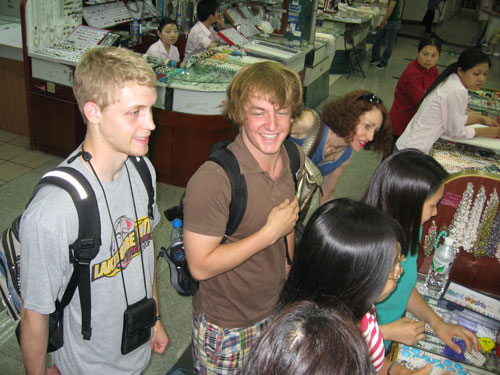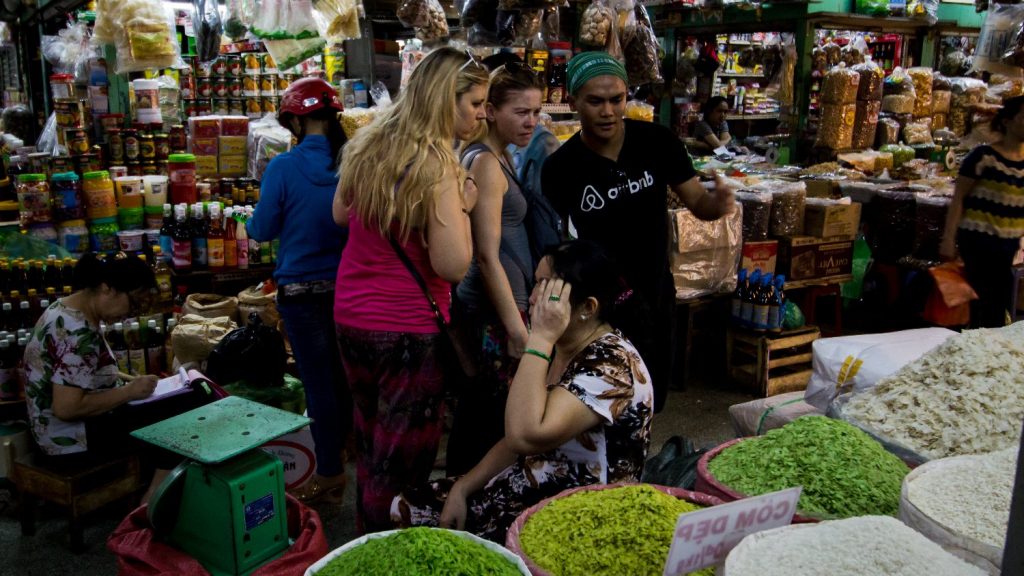
What is it worth?
In Vietnam, the first thing to understand about bargaining is that it is a negotiation process. It is designed to answer the exact question of worth or value. However, as with all negotiations, there are two sides:
The point of the negotiations in a bargaining situation is to establish a “match” between the relative monetary value the owner places on the object(s) being offered and the monetary value the potential purchaser attributes to their desire to own the object(s) in the vendors possession. In this sense, bargaining is like an auction, with a slight twist, and should be treated as such.
The questions to ask yourself are: “How much do I value the object(s) versus the value I place on my own money?”, and “How much worth/value does the vendor place on possession of my money versus their continued possession of the object(s)?”.
The reserve price
In Vietnam there is a price the vendor will never go below. Let’s call that the ‘Reserve Price’. The first price you get when you ask “How much?” is simply exploratory, ambit claim and as such should be largely ignored.
Treat this as the arbitrary gambit which it is. The key is to ask yourself the same question as Rule #1 and decide “How low you will go?”.
Go with a local
Vietnam must have some of the most incredibly good and inexpensive personal guides anywhere. Vietnamese people are incredibly proud of their country. Don’t be surprised if people thank YOU just for visiting their homeland.
The pricing knowledge you can get from a local is usually invaluable in terms of both time and money. You will usually be given the price a local Vietnamese citizen would expect to pay and you can then venture forth knowing the “Reserve Price” and bargain on your own. If the whole bargaining process is one you would rather not enjoy, you can commission your guide to purchase objects for you. BUT, a word of warning: If the guide asks about the commission first, decline. A trustworthy guide will simply tell you how much they expect the purchase to cost & give you change if they found a good bargain.
The Vietnam 50% technique
1. The opening ‘gambit’ price will be about double the ‘reserve price’ for a foreigner, so immediately half it;
2. Take careful note of the responding price. If none is given, maybe you get a ‘cannot, cannot, cannot’ response, then you know you have begun to discover the ‘reserve price’, so that is to your advantage;
3. If you get a ‘cannot, cannot, cannot’, response to your first offer, ask for a responding offer from the vendor. By now the seller knows you are ‘going low’. The responding offer should invariably be lower than the original ‘gambit’ price, but probably still well above your initial response.
4. Take the responding offer and add 25%. This will probably be refused and you should be prepared to endure tales of woe about sick relatives and family members with incurable diseases. Simple fact is, downtown real estate in Ho Chi Minh City (Saigon) is some of the most expensive in the world. Upshot, the ‘sick’ relatives have already been well looked after;
5. Chances are now the vendor will ADD to your bid. Now it is an auction … with you bidding down!
6. If the vendor adds 50%, halve it.
7. If they add 50% again, halve it and look seriously disinterested (shuffle towards the door; shake your head; curl up the corners of the mouth, etc.)
8.Things might look ‘dicey’ now, so play the trump card … “No credit cards. I’ll pay in USD cash right NOW at my last price!”


